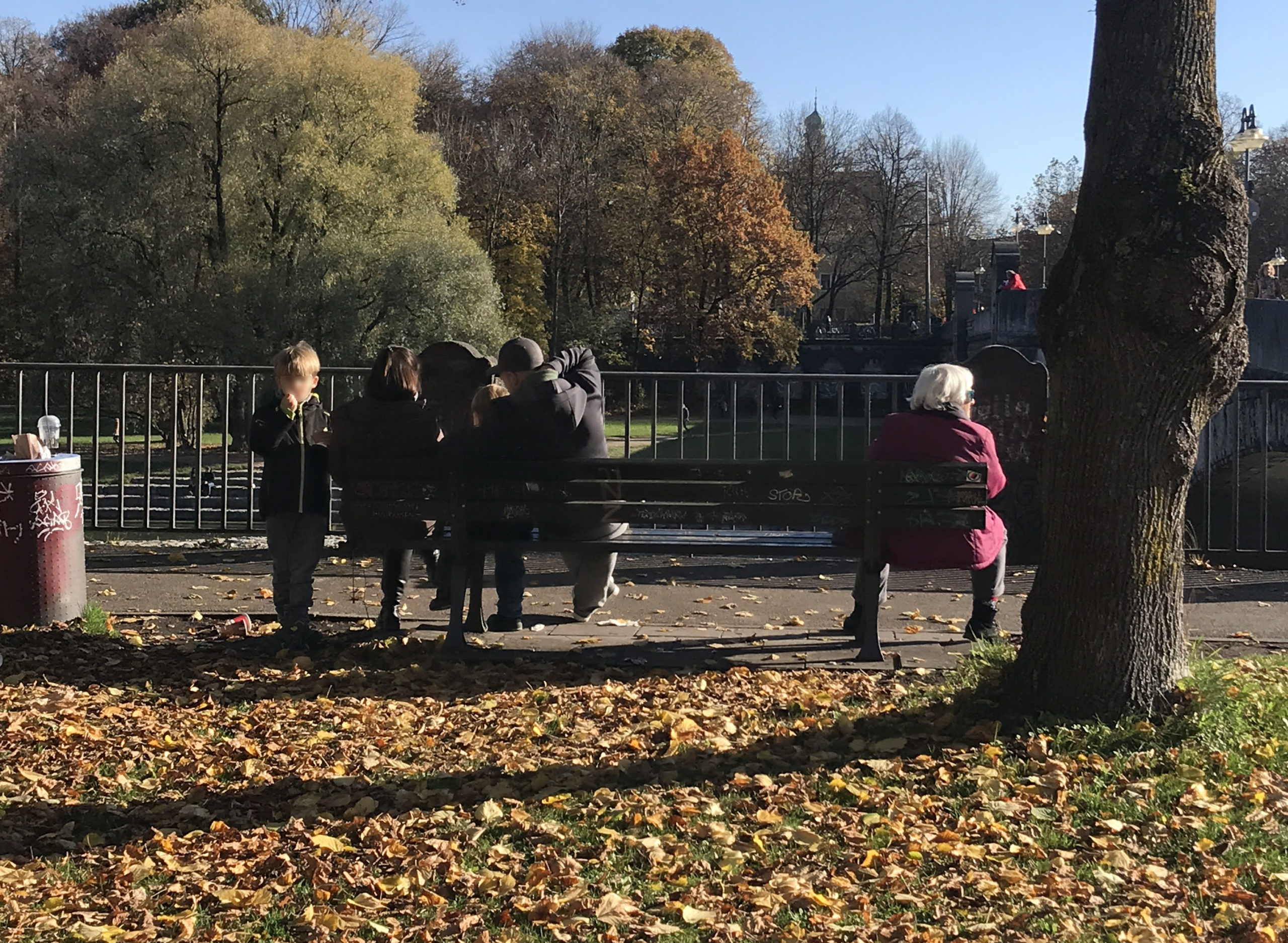During these cold winter days, many of us are nostalgic of the warm season, where you could just sit outside and enjoy the lively streets. Now, even if restaurants are closed because of the second lockdown, as soon as there is a ray of sun, everyone is out to savor it. In this context, one question bothers me: why is there so few possibilities to sit in streets? I noticed this quite recurrently in Munich since I pay closer attention to streets.
One of my personal experience is in the Nymphenburg Neighbourhood during my lunchbreak. Unless I sit on the main square which is usually full anyway, I can not find sufficient seating opportunities even walking around the block. Although there are a few take-away restaurants or bakeries around, it is just so hard to find a comfortable spot. An illustration of this are some teenagers, which I saw eating their take-away food sitting on the bus stop bench on the side of the express road Mittlerer-Ring. There is nowhere else to go! Hence these observations, here follow a few reflections on public seating in streets.
1. People can (and do) sit anywhere
It seems that our body just needs a light elevation difference to consider a surface as a valuable seat. Even the slightest step is a good candidate. This is of course linked to our body morphology but also, I believe, to our sense of space. No one wants to sit in the middle of nothing, by instinct, we will usually sit against a wall to be sure no one comes from behind, I believe this also explains why we like to sit higher on steps. The following picture illustrates what made me come to this observation. Even if sitting on the ground in the middle of a square, people chose to sit on the tiny steps just because they shape the space and create a limit. No one would sit in the middle of a flat plazza right?
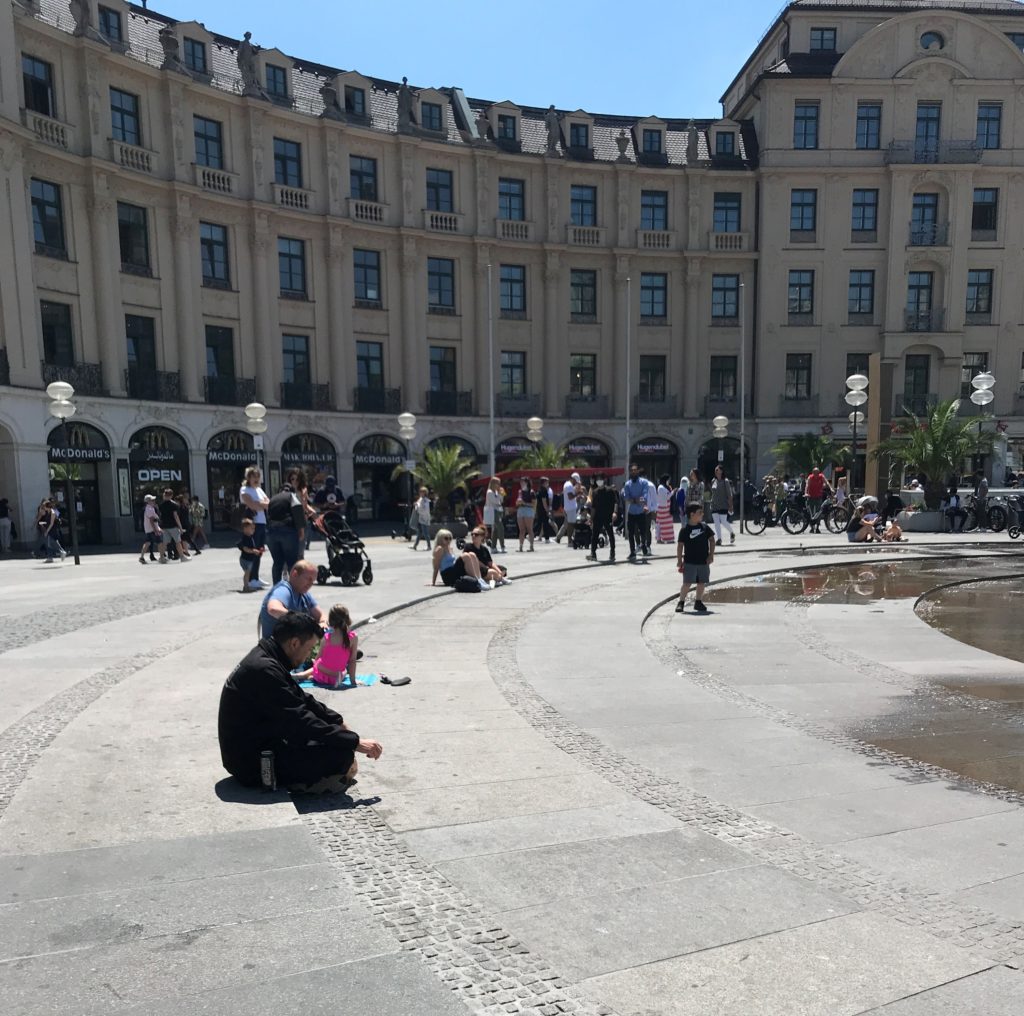
2. Measures to dissuade people from resting
As we noticed people tend to sit wherever it’s possible and this was very rapidly considered a problem in cities. A seating possibility means anyone can hang around there. Often it attracts a population which is not desired by the ground floor owner such as young groups or homeless people. Not surprising as this is the essence of public seating: it is the most democratic commodity as it excludes no one. To avoid this kind of population, owners, planners, administrators place dissuasive elements to make the surface uncomfortable to sit on. This can go from spikes to more discreet pebble stones, but all have the same aim, keep people away! I find the subtle design of these elements dreadful as, often, an element which at first sight seems for decoration, actually, has a vicious intention. Here is an example of such a subtle apparatus discovered exactly when I was searching for a place to eat my lunch.
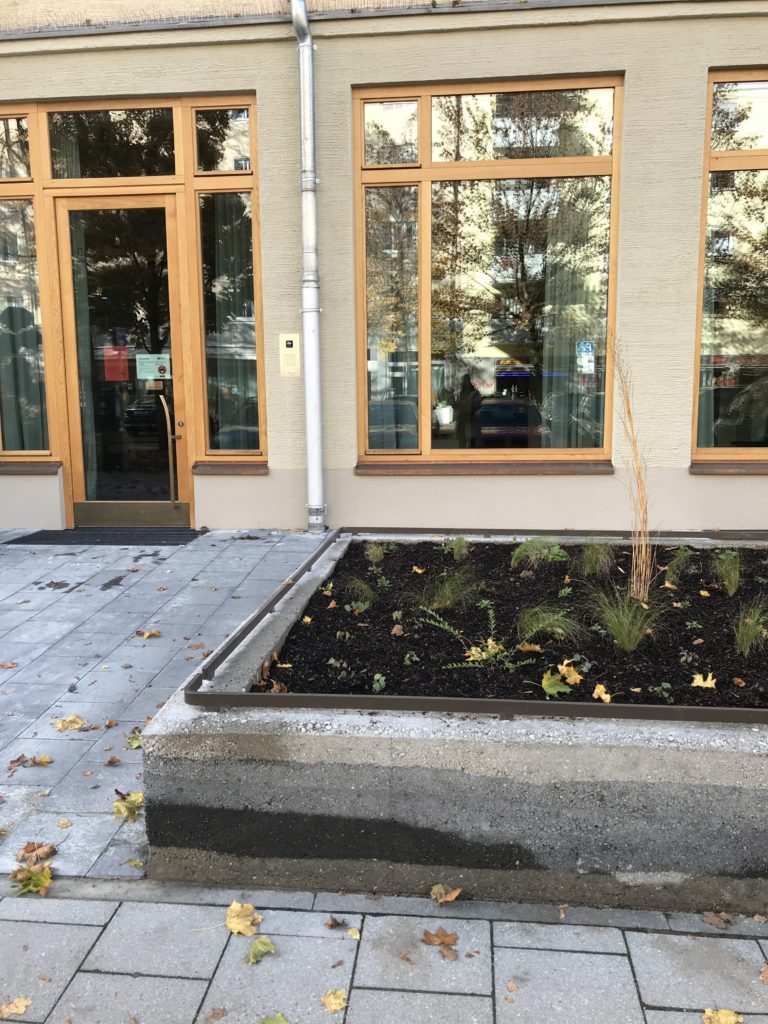
3. Too few seating experimentations make Munich’s public space boring
One could say that in the winter months no one sits outside anyway so benches are not a hot topic right now. This is actually quite the contrary. Cold days mean that people will be less willing to sit on the grass and on the cold steps, they will more than ever look for a more comfortable seat. Most of all during this second pandemic wave, we are all looking for a spot to enjoy our Glühwein (hot wine) with a friend.
Many speak of the importance to rethink our public spaces in order to make the outdoors enjoyable and thus limit risky indoors meetings (article Boomberg Citylab). On this seating possibilities I really believe Munich could do better. A good comparison is with my experience of Copenhagen in January. These were very cold days; the ground was covered with snow. However, I was very impressed by the composition of the public space and seating options. There was a great variety of designs of benches, steps, stones, structures to sit on and thus making our experience of the outdoor space pleasurable despite the cold.
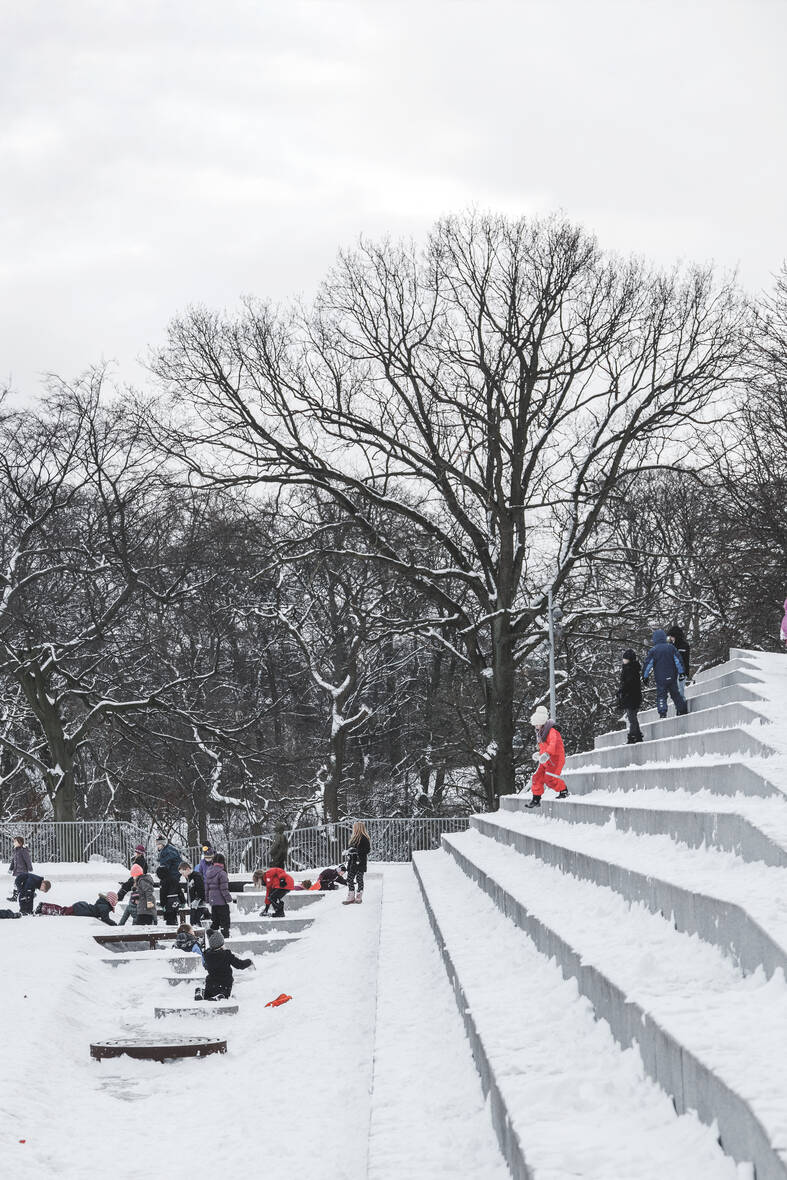
Of course, Munich does have benches, the point is that they are mainly the most boring type you can think of. You know, the dark green wooden bench covered of graffities. Nothing pleasant to the eye nor inviting for a short pause. Some spots are worth mentioning as they stand out from the basic solution. The Rosengarten has individual chairs that one can move to his ease, enabling the visitor to sit exactly where it pleases him. Another exception is the Piazza Zenetti in the Schlachthof Viertel which was arranged by Green City and the architecture office Raumzeug with colourful sitting blocks, including plant pots and display surfaces. This unconventional design fosters curiosity and enables a variety of uses.
Tell me what you think about developing seating opportunities and designs in Munich? Do you agree or are you more for the local style of “taking a blanket and sitting in the park”?
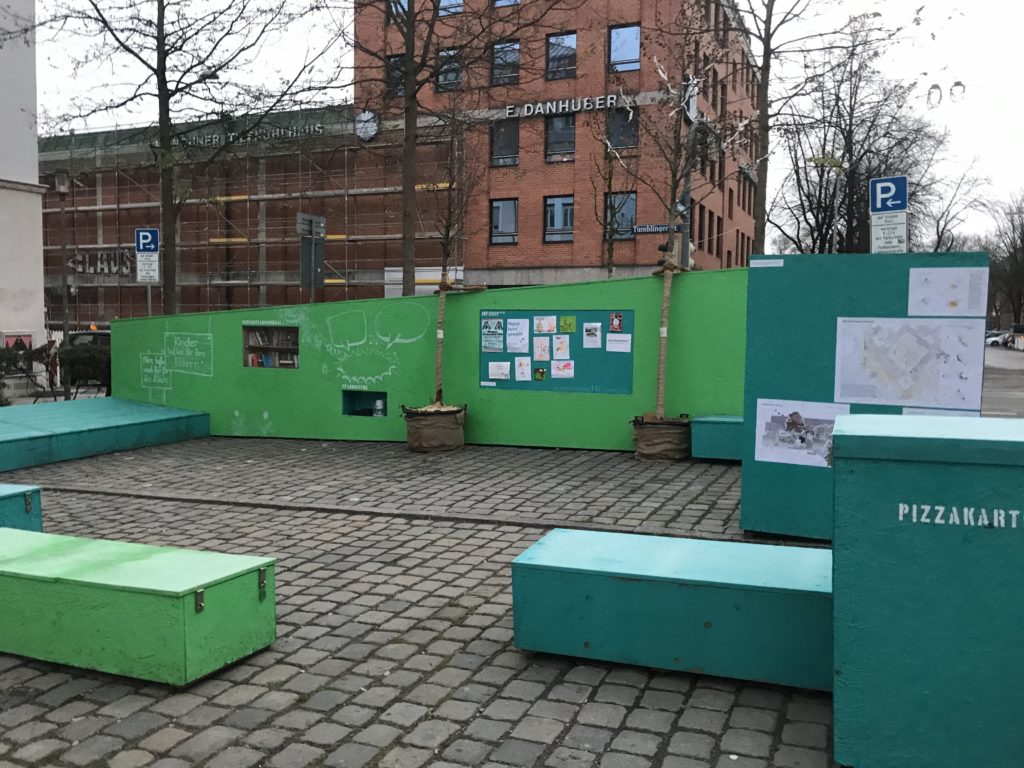
Sources
Articles:
- How to Make the Most of Covid Winter, A. Lange, 11/09/2020, Bloomberg Citylab
- Green City, Piazza Zenetti
Lectures:
- Lecture by Lambert Dousson, Urbanisme dissuasif, ENSA Montpellier, 2016-2017
